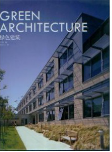题目内容
8.Chicago is considering firm measures to prevent the Asian carp,a giant fish native to the Far East,from coming into North America's Great Lakes in large numbers.Such a move could cost up to$18bn,a heavy economic burden to the city.This species,more than a metre in length,was originally introduced to southern US states three decades ago to control weeds in sewage(污水)treatment plants.But they escaped into the Mississippi River and increased in number quickly,making their way north towards the Great Lakes and threatening the native fish species along the way.
"Dozens of them will often leap out of the water as boats approach.''Michael Beecham,a local environmental expert,described how frightening the scene was."I've gone down the river and seen these fish jump up and hit me in the face.It is a big problem for our native species,"he said.
A meeting has been organized to find a technological solution to the carp problem,one of which involves blocking parts of Chicago's canal system.Listening at the meeting was John Goss,who was worried about the effect that having barriers in the canal system would have on industry."It would certainly increase the cost of transportation,"he told."It is currently very cheap and efficient to bring materials and finished goods down the Chicago ship canal."
Another cheaper option is to eat the fish out of existence.Dirk Fucik is selling carp burger(鲤鱼汉堡包)at his fish shop not far from downtown Chicago.He thinks the carps are a great resource."To catch it and throw it away is a waste,"he says."Eating them helps solve the problem and also provides jobs."But the idea has not yet caught on.So far,he is the only person in Chicago selling carp burgers.
61.From the passage we can see the Asian carpA
A.is very adaptable to the new environment
B.has made the Great Lake their home
C.is becoming a new food in restaurants
D.becomes even more fierce than before
62.According to Michael Beecham,the Asian carpC
A.jumps out of the water to eat weeds
B.always attacks people if disturbed
C.is a big threat to the local species
D.forms a beautiful scene on the river
63.In John Goss's point of view,the building of barriersB
A.can force the Asian carp out of the Great Lakes
B.may lead to the increasing cost of industrial products
C.will help the canal system work more efficiently
D.will bring high profits to the related companies
64.What can be inferred from the last paragraph of the passage?B
A.The Americans have included the Asian carp in their food list.
B.Dirk Fucik is a pioneer in selling carp burgers in Chicago.
C.Catching Asian carps has created many jobs in America.
D.Throwing away the caught fish is a waste of the resources.
65.What's the best title of the passage?D
A.The Great Lakes,new home for Asian Carps
B.The Asian carp escapes from the Great Lakes
C.Possible ways to handle non-native species
D.Chicago goes to war with Asian carps.
分析 本文属于记叙文阅读,作者通过这篇文章向我们介绍了在芝加哥亚洲鲤鱼非常适应那的环境,因此长得非常快,威胁到了当地物种的生存,人们正在想治理亚洲鲤鱼的方法,其中之一是将它们做成汉堡吃掉.
解答 61.A 推理判断题,根据第二段But they escaped into the Mississippi River and increased in number quickly,making their way north towards the Great Lakes and threatening the native fish species along the way.可知亚洲鲤鱼非常适应新环境,故选A.
62.C 推理判断题,根据第三段Michael Beecham,a local environmental expert,described how frightening the scene was."I've gone down the river and seen these fish jump up and hit me in the face.It is a big problem for our native species,"he said.可知Michael Beecham认为亚洲鲤鱼对本地物种是一个很大的威胁,故选C.
63.B 细节理解题,根据第四段."It would certainly increase the cost of transportation,"he told."It is currently very cheap and efficient to bring materials and finished goods down the Chicago ship canal."可知 John Goss认为用建筑物作为障碍可能会导致工业产品的运输成本增加,故选B.
64.B 推理判断题,根据最后一段But the idea has not yet caught on.So far,he is the only person in Chicago selling carp burgers.可知Dirk Fucik 是芝加哥唯一的一个卖鲤鱼汉堡的人,故选B.
65.D 主旨大意题,通读全文可知本文主要讲述了芝加哥是如何治理亚洲鲤鱼的,故选D.
点评 考查学生的细节理解和推理判断能力.做细节理解题时一定要找到文章中的原句,和题干进行比较,再做出正确选择.在做推理判断题时不要以个人的主观想象代替文章的事实,要根据文章事实进行合乎逻辑的推理判断.

| A. | if | B. | because | C. | when | D. | that |
| A. | this | B. | that | C. | it | D. | one |
| A. | minds | B. | values | C. | counts | D. | means |
 The Green movement is catching on in many parts of the world.This is especially true in the construction industry.Today's buzz words,which include global warming and zero emissions,are causing people to look for ways to reduce their carbon footprints.Purchasing houses that are environmentally responsible is a good investment for those who are concerned about their own health and the well-being of the earth.Based on this trend,entire districts,known as eco-communities,are being designed with green initiatives in mind.Dockside Green in Victoria,British Columbia,Canada,is one of these communities.Its goal is to become the world's first zero emissions neighborhood.
The Green movement is catching on in many parts of the world.This is especially true in the construction industry.Today's buzz words,which include global warming and zero emissions,are causing people to look for ways to reduce their carbon footprints.Purchasing houses that are environmentally responsible is a good investment for those who are concerned about their own health and the well-being of the earth.Based on this trend,entire districts,known as eco-communities,are being designed with green initiatives in mind.Dockside Green in Victoria,British Columbia,Canada,is one of these communities.Its goal is to become the world's first zero emissions neighborhood.